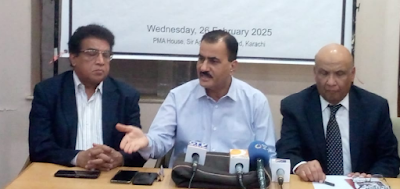Failing on HIV front
With rising HIV rates, Sindh faces a worsening crisis driven by data gaps, poor prevention, and systemic neglect.
The latest data on officially registered HIV cases over the past 16 months once again underscore a disturbing reality: Sindh, like other provinces, continues to grapple with systemic ineptitude in both prevention and surveillance mechanisms. More than 35 years into the global struggle against this virus, the lack of success raises a haunting question—are we truly committed to combating HIV with the seriousness it demands? The answer, unfortunately, seems to be no.
Medical
experts have repeatedly warned that HIV is no longer a hidden threat but a
full-blown public health crisis. It is steadily escalating, and in the absence
of sustained, coordinated interventions, it risks erupting further into a
series of uncontrolled epidemics.
A recent
report published in this newspaper revealed that Sindh has been recording an
average of 269 new HIV cases every month since January 2024. Alarmingly, the
Mirpurkhas division alone witnessed a staggering 110% spike in such cases
during the last quarter of 2024. The report also noted the persistent
difficulty in acquiring transparent, timely data and evidence-based action
plans—an information void that only deepens the province’s HIV crisis.
In 2024, Hyderabad and Larkana districts were ranked first and second among Sindh’s six high-burden HIV districts. Troublingly, they have retained these positions in 2025, jointly accounting for 187 new cases this year—representing 22% of the province’s total registered HIV cases—compared to a combined 637 cases last year. Even more concerning is the sharp rise in Karachi’s Malir district, which has surged from sixth place in 2024 to second in 2025, now matching Larkana with 64 new cases so far.
The
shifting trends and emerging challenges in Sindh clearly call for an urgent,
inclusive discourse among all stakeholders, particularly those in positions of
authority. Piecemeal solutions and scattered efforts will no longer suffice.
Cumulatively, from 2014 to August 2024, Sindh documented 24,891 people living with HIV. Most were infected through sexual transmission, reuse of contaminated needles, transfusions of unscreened blood, mother-to-child transmission, unsafe surgical and dental procedures, and exposure in occupational or healthcare settings. This catalogue of causes reflects the ongoing vulnerabilities and alarming gaps in health safety standards across the province.
Ironically,
those heading the so-called surveillance and prevention apparatus have not
lacked opportunities to participate in conferences, workshops, and overseas
study tours—often under the guise of learning and capacity-building initiative.
Yet, these activities have produced few, if any, tangible outcomes on the
ground. Foreign technical support and international funding continue to flow,
but with scant accountability or measurable impact.
In a particularly disheartening development—though unsurprising to many observant quarters—Sindh is confronting this critical health challenge with a largely defunct Sindh AIDS Commission. This institutional paralysis, the result of official neglect, has rendered the Commission a dormant and forgotten entity. This inaction is not just administrative failure—it is a violation of the Sindh HIV/AIDS Control, Treatment and Protection Act of 2013, which was enacted to ensure effective prevention, care, and treatment of HIV in the province.
There is
no longer any debate: HIV has reached epidemic proportions in Sindh. Multiple
integrated behavioural surveys have called for immediate, remedial measures.
Yet the province continues to lag behind, trapped in inertia.
HIV/AIDS
is a grave public health issue in any society, demanding not only action but
also clear communication and accountability. Sindh must urgently realign and
reinforce its HIV control strategies. Fragmented efforts, bureaucratic
complacency, and rudderless planning must give way to a focused, sustained, and
evidence-driven response.
Editorial, Social Track, Karachi (May 30, 2025)








Comments
Post a Comment